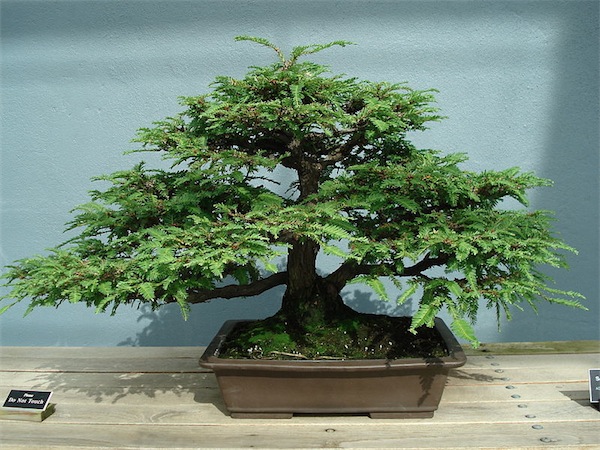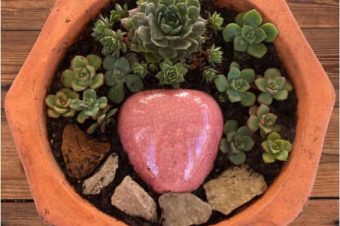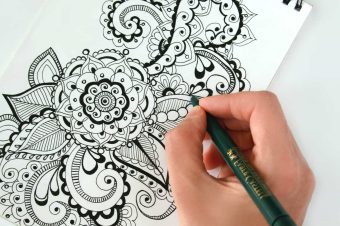How to Train Bonsai Trees – a short DIY Bonsai Course to Get Started

Above: This 55 year old Sequoia sempervirens (California Redwood or Coast Redwood) “Informal Upright” style bonsai tree from Brooklyn Botanic Garden, in New York City was photographed by Jeffrey O. Gustafson
Bonsai is a Japanese art form using miniature trees grown in containers. The Japanese tradition dates back over a thousand years, and has its own aesthetics and terminology. The purposes of bonsai are primarily contemplation (for the viewer) and the pleasant exercise of effort and ingenuity (for the grower). By contrast with other plant cultivation practices, DIY bonsai is not intended for production of food, for medicine, or for creating yard-size or park-size gardens or landscapes. Instead, bonsai practice focuses on long-term cultivation and shaping of one or more small trees growing in a container.
1 – Where to Start With a DIY Bonsai Tree
The best way to start a DIY bonsai is to grow it from seed. Alternatively you can transplant very sound seedlings that have self-sowed themselves in the garden.
It will usually take about two years for the seedlings to reach a height of about 30-40 mm (1-1.5 ins). At this stage (during spring) they can be potted into a container filled with about 80-100 mm (3-4 ins) of compost. Keep the plant outdoors in a sheltered, shady environment.
The following autumn, you need to transplant the tree into a bed of good soil, or re-pot them in about 130-150 cm (5-6 ins) of compost. The pot or pots should be kept in a sheltered place outdoors; and the pros often bury the pots (up to the rim) in peat.
2 – Training your Bonsai Stem
At this stage you can also start to train the stem. Use wire to bend the stem (which is in effect the young trunk) and achieve a gnarled, aged appearance – but be careful not to damage the tree.
A good rule of thumb is to wait until the stem is about 10 mm (less than half an inch) in diameter, prune the stem – by cutting it about 100-150 mm (4-5 ins) from the base. It sounds harsh, but it has to be done. It won’t take long for side-shoots to start appearing.
Towards autumn, when the tree has obviously stopped growing, you will need to prune its roots heavily. Only leave the fibrous roots. Then transplant the tree into smaller pots that are just big enough to take whatever roots remain. If you look at the containers that bonsai grow in, you will realize just how little root should remain!
3 – What size should my DIY Bonsai be?
Small trees grown in containers, like bonsai, require specialized care. Unlike houseplants tree species in their natural surroundings in general, grow roots up to several meters long and root structures encompassing several thousand liters of soil. In contrast, a typical DIY bonsai container is under 25 centimeters in its largest dimension and 2 to 10 liters in volume. Branch and leaf (or needle) growth in trees is also large-scale in nature. Wild trees typically grow 5 meters or taller when mature, whereas the largest bonsai rarely exceed 1 meter and most specimens are significantly smaller. These size differences affect maturation, transpiration, nutrition, pest resistance, and many other aspects of tree biology. Maintaining the long-term health of a tree in a container requires some specialized care techniques:
- Watering must be regular and must relate to the bonsai species’ requirement for dry, moist, or wet soil.
- Re-potting must occur at intervals dictated by the vigor and age of each tree.
- Tools have been developed for the specialized requirements of maintaining DIY bonsai.
- Soil composition and fertilization must be specialized to the needs of each bonsai tree, although bonsai soil is almost always a loose, fast-draining mix of components.
- Location and overwintering are species-dependent when the bonsai is kept outdoors as different species require different light conditions. It is important to note that few of the traditional bonsai species can survive inside a typical house, due to the usually dry indoor climate









4 Responses
Beavis
I’ve tried looking on youtube and stuff but I can’t find a strait forward answer. All I can find is just one aspect of keeping a bonsai. I’m planning on buying a tree from somewhere like HomeDeopot instead of planting a seed. Also what is a species that can be kept indoors all year round.So yeah, thanks in advance :).
Milk84
i have never had a bonsai tree but i want one. i live in the UK so its cold and i want an indoor one. i would like a smallish one but not extremly small 10 inches will do. what types fit that criteria? any links to pictures? and i kno bonsai trees need looking after what equiptment do i need?
i looked on google its not very usefull!
Janek
You can start with the craft menues and categories on our site here, this will be a good list to start with.
Michael K
Could somebody please make a list of all the various craft interests??